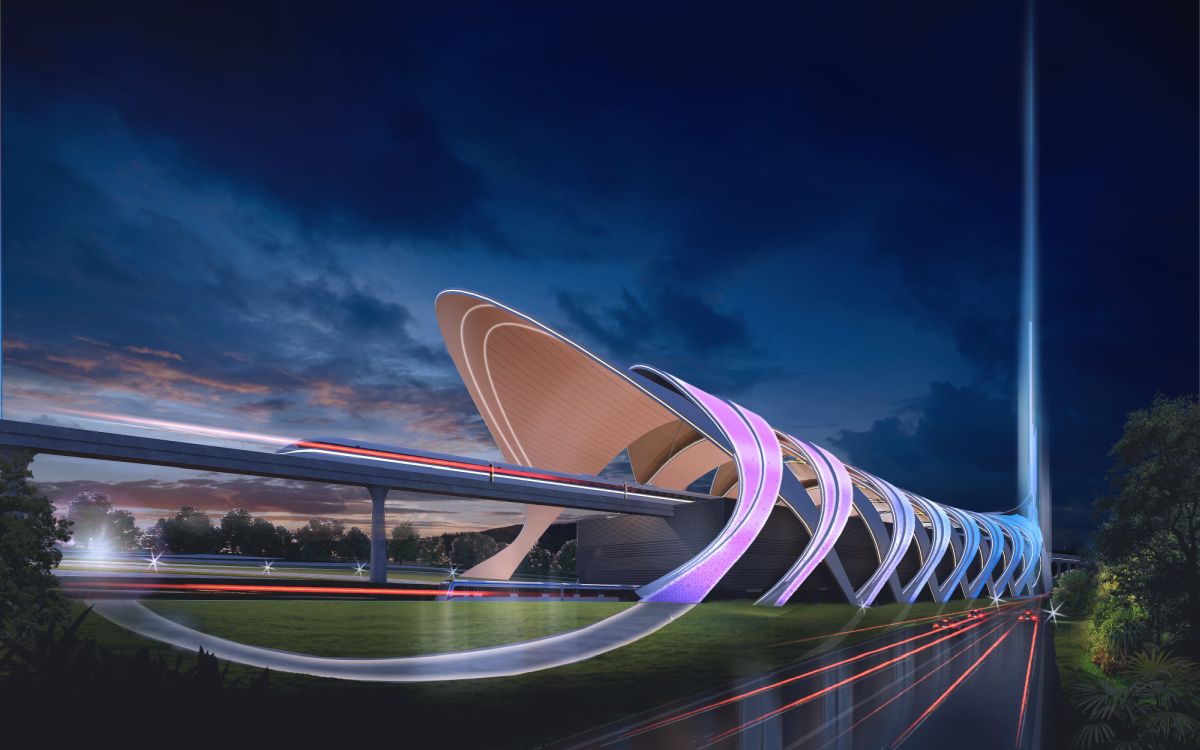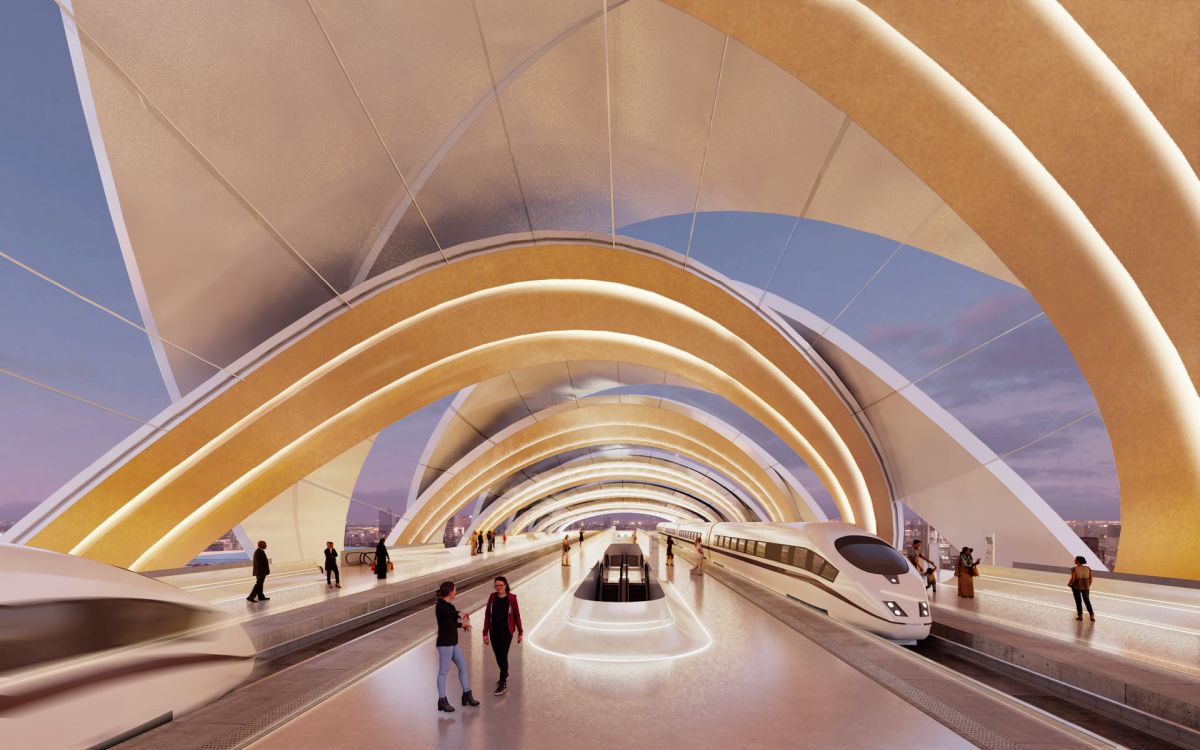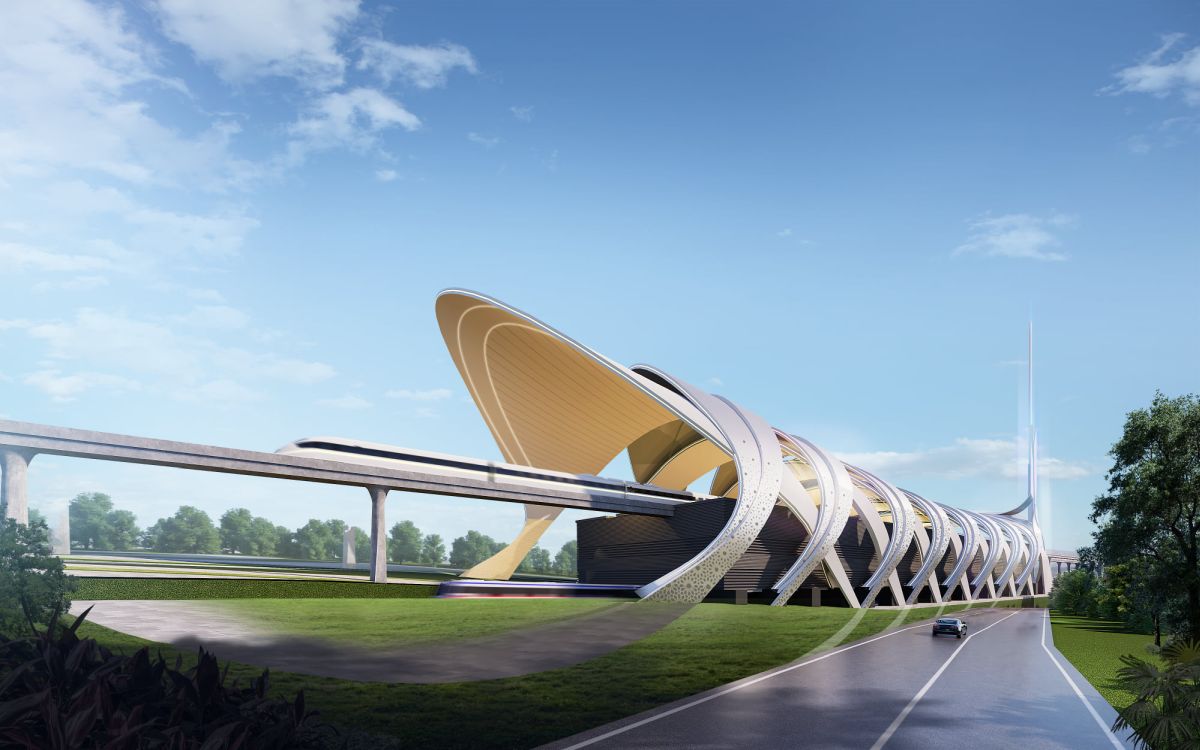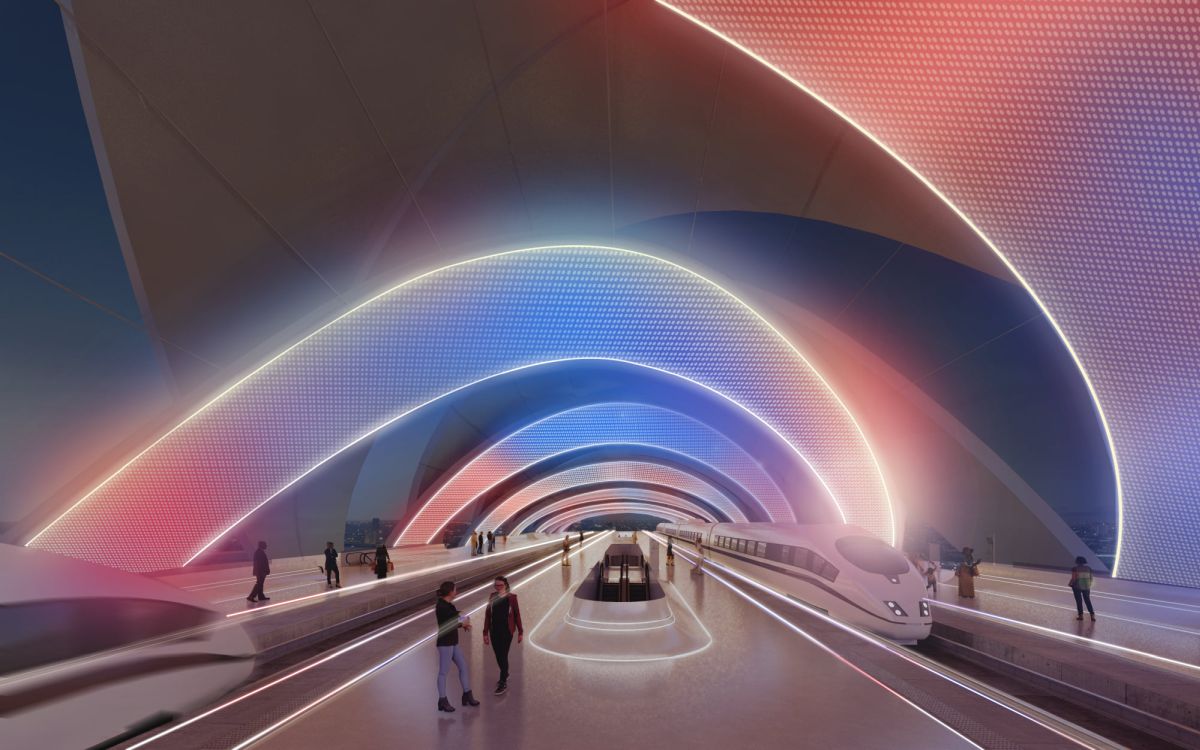Today, the Mass Rapid Transit Corporation Sdn Bhd (MRT Corp) unveiled the design for the Johor Bahru-Singapore Rapid Transit System Link (RTS Link) Project’s Bukit Chagar station, and it looks like it came straight out of the Marvel Cinematic Universe’s (MCU) Asgard—complete with its own rainbow bridge.
This design comes from Johor Bahru-based architect Ar. Chin Yee Chong from SM Architects Sdn Bhd, and is supposedly designed around the theme “The Integration of Two”, which is to represent the historical relationship between JB and Singapore.

It won the grand prize at the PAM+MRT Corp RTS Link Station Facade Design Ideas Competition, which was organised by MRT Corp and Pertubuhan Akitek Malaysia (PAM). The competition ran from the 23rd of November 2020 to the 25th of January 2021, and saw a total of 91 submissions. By winning the grand prize, Ar Chin brought home its grand prize of RM250,000.
This winning design adopted many “green” features as well as “advanced light-weight composite materials”. There will also reportedly be self-cleaning glass and feature lots of natural sunlight, which will help reduce the cost of maintenance.

According to MRT Corp chief executive officer Datuk Mohd Zarif Hashim, the four storey building will be used to co-locate the Immigration, Customs and Quarantine (CIQ) too. He also added that commuters will need to clear both Singapore and Malaysian immigration, but that can be done in the same building.
“Commuters need to clear formalities with the Johor immigration first before going one floor up and do the same with the Singapore side, and then board the train. Once in Woodlands, they can just go off and about,” he said. Datuk Zarif also hopes that when everything is up and running that they will be able to live up to expectations—moving people seamlessly between the two countries in just 15 minutes.

The RTS Link route is 4km, and will connect this station in Bukit Chagar to Singapore’s Woodlands North MRT station. 2.7km of the route will be in Malaysia while the remaining 1.3km will be in Singapore. This service will apparently take commuters from station to station in just five minutes after clearing immigration. It can carry up to 10,000 passengers per hour in each direction.

Malaysia has started construction on its side of the infrastructure in November 2020. The line is expected to begin operations by the end of 2026, and despite challenges, the project appears to be proceeding on schedule. This line obviously offers an important alternative to the existing transits available between JB and Singapore.
The project is also reported to directly create 1,500 job opportunities while the completed station in Bukit Chagar is expected to bring about another 15,000 jobs. These include supporting occupations like F&B services and entertainment, among others.
What do you think of the design? Let me know in the comments below.








